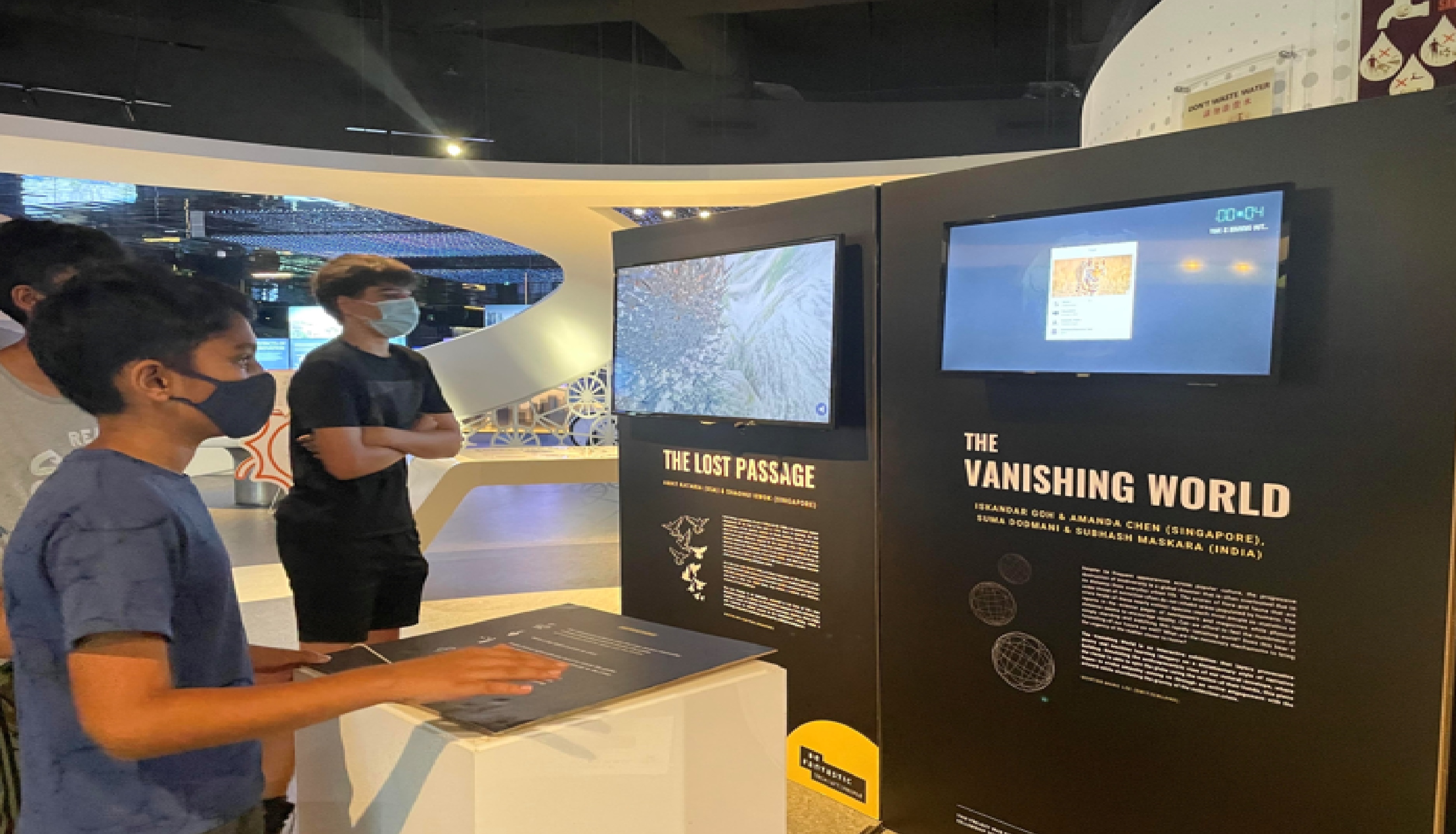
"VAN" (Amay Kataria - Chicago, United States - 24.05.2022) :: The Lost Passage is an innovative and thought-provoking interactive art project, which was showcased at the recent exhibition entitled “Can Tech Save the World and Art Heal it?” The exhibition was held at Singapore Sustainable Gallery located at Marina Barrage, Singapore from March 22nd to April 25th. The exhibition aimed at addressing and linking technology, sustainability, and Climate. It intended to showcase and accelerate sharing of solutions to combat environmental challenges that we face today. Scientists, researchers and artists focused on issues such as access to quality water, waste recovery, maintenance of biodiversity, access to green energy and carbon free mobility. The exhibition displayed engaging TechArt works curated by BeFantastic - an innovative platform that envisions pushing the boundaries of art and technology.
Designed and developed by the Chicago based new-media artist Amay Kataria in collaboration with Shaohui Kwok and Yu-Jeng Kuo from Singapore, The Lost Passage presents an artificial swarm of passenger pigeons that inhabit a digitally constructed space on the internet. The walls of this space are painted with a moving image of sublime landscapes that depict a sense of a lost habitat that these pigeons once occupied.
Passenger pigeons surprisingly went extinct in 1914; exactly four decades after growing to a massive population of 5 million in the 1800’s. However, their extinction was not a sudden phenomenon, for it was a continuous brutal and ignorant behavior of humans that kept triggering their decline. Rampant hunting and habitat destruction caused this flock of millions to disappear from the face of this Earth. Traveling in fast, whopping swarms throughout the eastern and mid-western United States and Canada, the advancing flock ‘used to be’ a spectacle –“a feathered tempest” as said by an environmentalist Aldo Leopold. This project critically points out a contradiction in freedom availed by passenger pigeons, whose last endangered flock was raised in the vicinity of Chicago and had to be carried in confined crates of freight trains for safe migration.
“My practice depicts a deep concern with the human condition and the invisible, intangible field of empathy, sensitivity, care, and intimacy,” says Amay Kataria. A master in the craft of working with industrial technologies, Kataria constantly pursues a level of productive research and development in Tech Art that unravels unseen realities, connects invisible dimensions of human condition, and unconsciously hints the viewer’s minds to his own intentions. In this recent project, he has resurrected an extinct species and given it a new digital home on the internet. He’s been successful in an attempt to drive and open human minds towards their invisible yet irreversible impact on the environment.
By using artificial intelligence, machine learning, and 3D modeling, this project revives a ghost of the extinct passenger pigeon confined within a visceral landscape that doesn’t exist anymore. It perfectly amalgamates the coexistence of freedom and confinement in the same space. The artificial pigeons move with finesse, aware of their bounded freedom, and maneuver with an agency defined by software algorithms. The Lost Passage uses technology to tell the story of an extinct species and brings our attention to the ways how human influence can jeopardize their own environment. By using deliberate play and visceral imagery, the project educates adults and children about our critical role in environmental conservation. By revisiting the history of human folly, it raises a call to take the responsibility to prevent this from repeating again.
Responses
Leave your comment